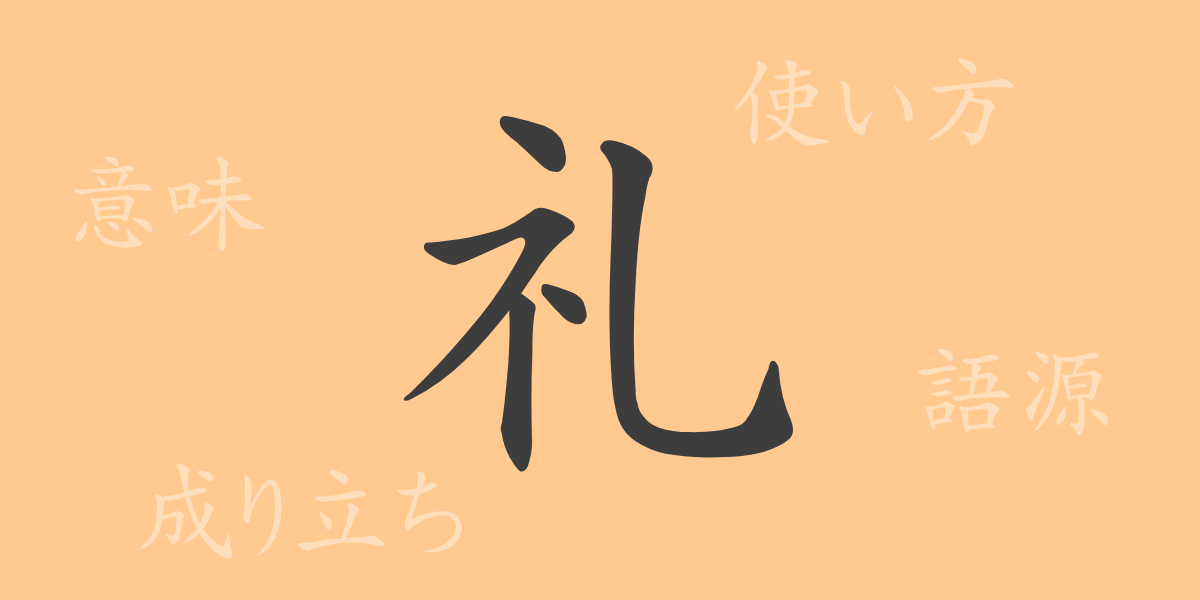In Japanese culture, politeness is considered the foundation of social life. The single character “礼” (rei) encapsulates this spirit and is widely used in various contexts, from daily life to business scenes. This article delves deeply into the charm of the 常用漢字 (jouyou kanji) “礼” (rei), exploring its origins, meanings, usages, as well as idiomatic expressions and proverbs.
Origins of 礼 (rei)
The kanji “礼” (rei) has evolved from ancient Chinese pictographs. Originally, it referred to ritual ceremonies, stemming from acts of reverence and gratitude towards deities. The culture of valuing “礼” (rei) has played a crucial role in shaping individual morals and social order.
Meanings and Usages of 礼 (rei)
“礼” (rei) encompasses meanings such as “礼儀” (reigi – manners) and “礼節” (reisetsu – courtesy), referring to actions, greetings, and expressions of gratitude that show respect between people. It is also used to describe one’s actions with a sense of humility.
Reading, Stroke Count, and Radical of 礼 (rei)
Here is some basic information related to the kanji “礼” (rei).
- Reading: The on’yomi (音読み) is “レイ” (rei); there is no specific kun’yomi (訓読み).
- Stroke Count: It has a total of 5 strokes.
- Radical: The radical is “示” (shimesuhen).
Compounds, Idioms, and Proverbs Using 礼 (rei)
There are numerous compounds, idioms, and proverbs that include “礼” (rei). Expressions such as “礼儀正しい” (reigi tadashii – well-mannered), “礼を失する” (rei o shissuru – to be rude), and “無礼講” (bureikou – informal gathering) are frequently used in daily conversations and written language. These often suggest social norms and individual behavioral patterns.
Conclusion on 礼 (rei)
“礼” (rei) is an indispensable element in the lives of Japanese people, enriching their hearts and ensuring smooth social functioning. Understanding the meaning embedded in this single character and using it appropriately can help build better human relationships.

























